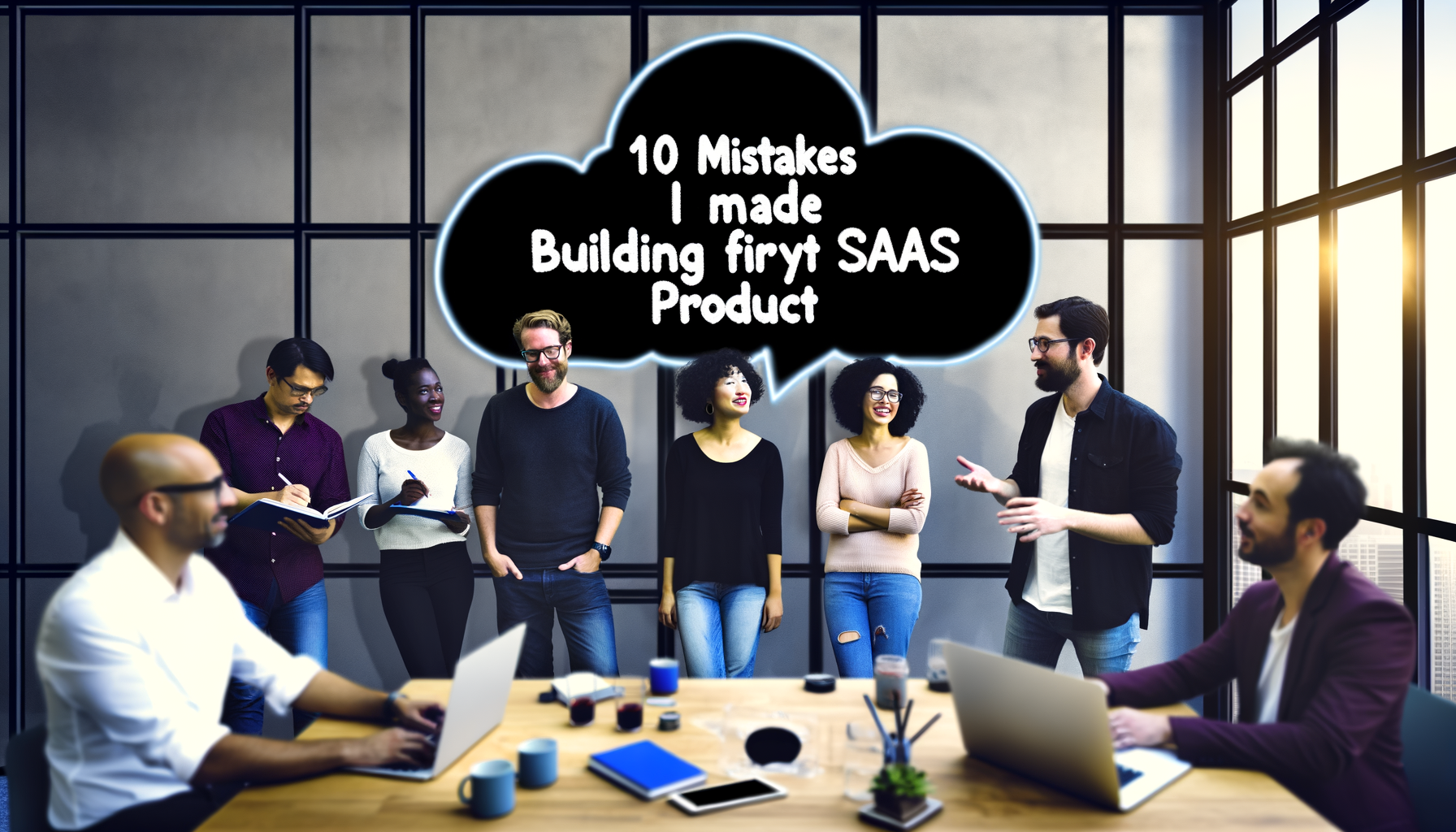
10 Mistakes I Made Building My First SaaS Product
Embarking on the SaaS Journey: Navigating the Initial Challenges
The allure of launching a Software as a Service (SaaS) product is undeniable. The promise of recurring revenue and the scalability inherent in software solutions make it an appealing venture for many entrepreneurs. However, as enticing as it is, the path is fraught with challenges and potential pitfalls. In my journey of building my first SaaS product, I’ve navigated through numerous hurdles and made several critical mistakes. I hope sharing these experiences will help aspiring founders like you avoid similar potholes and succeed in your entrepreneurial journey.
Understanding Market Needs: The Misstep of Premature Assumptions
One of the earliest mistakes I made was assuming that I understood what my target market needed without extensive research. I was so confident in my initial idea that I prioritized developing the product over understanding my users’ real pain points. This resulted in building features that were little appreciated by our customers. To remedy this, I learned the importance of rigorous market research, customer interviews, and adopting a customer-centric approach. Your solution should always align with users’ needs rather than your assumptions.
The Importance of Building an MVP
I initially underplayed the significance of a Minimum Viable Product (MVP), choosing instead to spend time and resources building a ‘perfect’ product. This strategy backfired, leading to extended development cycles and delayed market entry. An MVP helps you test your product with real users and gather invaluable feedback quickly. Releasing early and iterating based on real user feedback is critical to SaaS success. Remember, done is better than perfect.
Pricing Strategies: More Than Just Numbers
Pricing my SaaS product was another area where I stumbled. I failed to recognize that pricing is as much a strategy as it is a number. Initially, I priced based on competition rather than value, which diminished the perceived value of my product. Establishing a pricing strategy that encapsulates the value proposition and justifies the cost from a customer’s perspective is crucial.
Customer Onboarding: A Neglected Process
Another crucial mistake was overlooking the customer onboarding process. I assumed that customers would understand my product as intuitively as I did. Poor onboarding can lead to decreased user retention, understanding, and ultimately, success. Investing time in creating a seamless onboarding experience that guides new users through product features can significantly boost user retention.
Focus on User Experience
User Experience (UX) was something I took for granted. Excellent features wrapped in a poor UX perform substantially worse than initially expected. Early in my journey, I learned the hard way that UX is not just an afterthought but a critical component of product development. Emphasizing intuitive design and user-friendly interfaces ensures that your users will find value in, and continue to use, your product.
Underestimating the Sales and Marketing Strategy
Having a robust sales and marketing strategy is crucial, but I underestimated its importance. Simply having a great product wasn’t enough; I needed to communicate its benefits to potential customers effectively. Developing a sales funnel, building relationships, and strategically marketing the product were key areas I realized needed more focus.
Technology Choices: Balance Innovation with Reliability
Choosing technology stacks was another area rife with missteps. I often opted for bleeding-edge technology without considering stability and long-term sustainability. While it’s tempting to want the latest bells and whistles, your technology should be scalable, maintainable, and align with your team’s expertise. Innovation is important, but sustainability and reliability cannot be sacrificed.
Taking on Too Much: Know When to Seek Help
I fell into the common startup trap of trying to do everything myself. Recognizing when you’re out of your depth and seeking external expertise isn’t a sign of weakness, but one of strategic foresight. Bringing on advisors, hiring skilled team members, and engaging with like-minded communities can provide the support you need to scale effectively.
Ignoring Customer Feedback
At times, I was guilty of selectively listening to customer feedback, mainly focusing on suggestions that aligned with my initial vision. True product improvement lies in embracing all feedback, especially the criticisms that might be harder to swallow. Constructive feedback is an invaluable tool for refining your product and ensuring it meets user expectations.
Balancing Vision with Adaptability
Finally, I struggled with balancing my long-term vision against the need to adapt to market feedback and conditions. While having a clear vision is essential, being too rigid can prevent necessary pivots that align with market demands. Embracing adaptability doesn’t mean abandoning your vision; it means evolving it to remain relevant and competitive.
Conclusion: Embrace the Lessons, Avoid the Pitfalls
Building a SaaS product is an exhilarating journey of challenges and opportunities. Reflecting on the mistakes I’ve made has not only been a humbling experience but also a powerful teacher. By sharing these experiences, I hope to provide new entrepreneurs with the insights needed to navigate the early stages with greater confidence and clarity.
Remember, every mistake is a stepping stone towards creating a more robust and user-centric product. Stay committed to learning, be open to change, and always keep the user at the heart of your development process. For more insights and lessons from my entrepreneurial journey, feel free to follow along as I share my experiences and the evolving story of Foundercrate.
